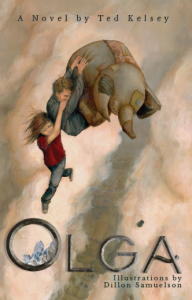The Rundown
The Recommendation
The Rating
The Links
The Reviewer
Renee Miller
Visit Renee Miller‘s website.The first thing I do when outlining a new “work in progress” is meet my characters. By that I mean I sit down and create backstories for the main players in the story. Some writers pen plot-driven tales, while others, like me, prefer to let the characters shine. Some of us achieve a balance between both plot and character, where both are equally important. Whichever way you write; characterization is always crucial to creating a memorable story.
Now, you’ve got your protagonist and the asshole causing him problems all laid out and ready to go. Now the real fun can begin. We write.
Not quite yet. We spend a lot of time building our main characters, but I find too few of us give equal attention to secondary and incidental characters. Because of this, they’re often flat or boring. They’re forgotten or only vaguely remembered. That’s a shame, because these forgettable characters can be used to enhance your story and its stars.
Let’s start with secondaries. While secondary characters are often static, and are typically only there to help drive the plot or serve as an enhancement to the main characters, they can be just as dynamic as your book’s stars. They can offer you some interesting sub-plots that keeps the reader turning those pages when the main plot slows down.
So, how is this done? Let’s use a best friend as an example. As a secondary character, the best friend is often the most important to the protagonist. Make sure her story actually affects the decisions and actions in the main character’s life. This positions her as a driving force, so her story can enhance the main plot.
What kind of story? Let’s see. We’ll call the best friend Lucy. Now, give her some information about something the protagonist needs to know. Maybe your protagonist dates a guy who seems to be a genuine Prince Charming. But wait, Lucy is a drug addict. She doesn’t tell her friend, the protagonist, because Lucy knows the protagonist’s mother died from a drug overdose. So, the best friend goes to her dealer. As she’s waiting in the hallway of her dealer’s home, Prince Charming emerges from a room upstairs - with a nearly naked redhead. He’s out of his mind high, and he’s tucking in his shirt. Maybe he’s still trying to pull up his pants. Well, well, well.
Does Lucy tell the protagonist? If yes, how does she explain what she’s seen? What possible reason would she have for being in a drug/whore house other than that she’s either buying drugs or selling her body?
This might be more of a subplot than you want to give. I’ve exaggerated the example to show how secondary characters and their subplots can add depth, interest and tension to your story. They can also increase the pace or slow it down. These side stories and characters can also be used to provide information or backstory without weighing everything down with exposition.
We’ve got the secondaries definition cleared away, so let’s take a minute to look at the incidentals. They include neighbors, acquaintances, waitresses, police officers, drunks at a bar, or any character that plays little more than a walk-on part in the story.
Incidental characters should be used as setting; they add color to the story, and are necessary, but they don’t affect the outcome of the plot. For example, in Charlaine Harris’s Sookie Stackhouse novels, background characters never take over the main characters’ spotlight, but they're memorable. Jane is a fixture at Merlotte’s, the local bar where Sookie works. As an incidental, she doesn’t affect the plot and could be taken out without changing what happens, but she adds to the color of Sookie’s setting, which is what these characters should do, and the reader remembers her as vividly as she remembers Sookie.
Small things like a creepy postman or an annoying neighbor, can add to the setting and atmosphere. Shall we have a look at a few of our most common extras? All right then, here we go:
Main Character
Wait… what? Yes, the main character. This is the person whose eyes we’re viewing the story through. The main character is your narrator and doesn’t have to be your protagonist. We don’t see ourselves and what we do as others can see us, and your protagonist can’t either, so using a secondary character as a narrator can significantly enhance your story and characterization. For example, Anne Rice uses Louis to narrate Lestat’s tale in “Interview with the Vampire.” Lestat is the star, but who is it we remember most? While Lestat is the character the story is centered on, the driving force behind the plot, Louis’s narration adds color and intensity that Lestat’s POV could not have done. And Louis becomes memorable without overshadowing Lestat. As if anyone could outshine Lestat. Am I right?
The Sidekick/Bestie
Ah, the sidekick/bestie, your protagonist’s faithful go-to guy or gal, but any character can have a sidekick, not just the protagonist. And he can support the protagonist without being a yes-man all the time. The role of this guy or girl is varied, but the potential for cliché is huge, so use this one with caution and make sure he’s necessary to the plot before you go dropping him in all willy-nilly.
For example, Watson, Sherlock’s sidekick character, is loyal and all that, but he sees Sherlock for what he is. In other words, this character doesn’t have to be stupid or blindly follow the character he supports. He can play the yin to that character’s yang. Get it? Good.
The Voice of Reason
The Voice of Reason character might be perceived as cold or boring. She’s the one that bases everything on logic, and may be on the protagonist’s side or the antagonist’s. She might not be on anyone’s side. Her purpose is to rein shit in and make everyone just calm the fuck down and take stock. She doesn’t even have to be a person. She could be a character’s conscience, an event, or a relationship. While she may not be a person, the voice of reason plays an important role in keeping things moving in your story.
For example, Gandalf plays the voice of reason in “Lord of the Rings.” When the main characters get all bent out of shape and lose sight of the goal, a brief scene with Gandalf gets shit back on track and reminds them of their goals and the severity of their situation. Inserting a voice of reason merely to give facts is lazy. This character must remind the other characters what’s at stake without literally reminding them what’s at stake.
The Emotional Pit
The Emotional Pit can energetic, disorganized, angry, sad, whatever; he is someone that seems to be out of control and/or driven by feelings. This secondary’s emotions are quick to ignite, whether the emotion is anger, excitement or something else. Perhaps he’s an ex-boyfriend, or the weird neighbor who likes to make protest signage or the kid down the block who killed your antagonist’s cat last month because it was giving him messages from Satan. The important factor in this character is that he must stand apart from the main plot line as an extra, but still manage to crank up the conflict and tension.
Your Emotional Pit character should help the protagonist identify his emotions, or he should force other characters to realize the severity of the situation. He might even be an obstacle in the protagonist’s way. He’s not the villain or the antagonist, but he could still be a challenging pain in the ass.
Miscellaneous Incidentals
The shopkeeper, the mailman, the hooker that no one likes to admit knowing on a personal level, the neighbor…all the characters the reader thinks are part of the set, but who actually play a big role when the shit gets real are the incidentals.
These inconsequential characters are all the ones you need to add to make the story believable and to help drive the action forward. If your character goes to a store, there needs to be a cashier to ring in what he buys. If he goes to a bar, someone has to make his drink, or to annoyingly flirt with him. These characters are asides, not part of the action or main plot line, but vital to it. Stephen King, Charlaine Harris, and Dennis Lehane are all brilliant at creating incidentals that are so dynamic and real, you can’t imagine another character playing the small roles they’re given. Read their books and you’ll see what your goal should be in creating an incidental character. While their actions may not change the outcome of the story, if you remove them, it affects the story and it’s “tone” dramatically.
So there you have it. There are other types of extras you can put into your story that I haven’t listed here. In the interest of brevity (okay, so I wasn’t brief), I tried to keep it to the most commonly used ones. For example, I haven’t mentioned inhuman characters, love interests or family members. Maybe we’ll visit those at a later date.









